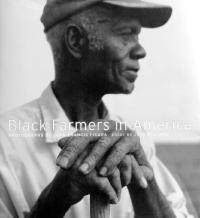Three treasures for the coffee table
Published 12:00 am Sunday, May 14, 2006

- Hitler Youth: Growing Up in Hitler's Shadow, by Susan Campbell Bartoletti. New York: Scholastic, 2005. 176 pages, $19.95 (Hardcover).Black Farmers in America, photographs by John Francis Ficara, essays by Juan Williams. Lexington: University Press of Kentucky, 2006. $49.95 (Hardcover).The American Auto Factory, by Brian Olsen and Joseph Cabadas. MBI (Motor Books International) Publishing: 2002. 192 pages, $34.95 (Hardcover)
There’s something about a coffee-table book that’s kind of fun. You can pick it up and leaf through it at any time, moving backward or forward at leisure. There’s no real plot to remember, you can sit with a companion and look through it together, and there are, of course, lots of pictures. Not all of these kinds of books are alike, however. Some who might be quite happy sitting down with Christopher Heinrich’s “Claude Monet, 1840-1926” might not want to spend any time with the “The R. Crumb Coffee Table Art Book.” Yes, taste in books is a fickle thing. On the other hand, three books, “Hitler Youth: Growing Up in Hitler’s Shadow,” “Black Farmers in America,” and “The American Auto Factory” are somewhat difficult to process. While they have the size and shape of a standard coffee-table book, they have three divergent presentations.
In Susan Bartoletti’s “Hitler Youth,” pictures, interviews and historical research combine to present the Nazis’ efforts to inculcate their country’s youth with Hitler’s political ideology. This book is both fascinating and disturbing. As the interviews in this book show, older Germans feared the onset of war during Hitler’s rise to power. Children in the Hitler Youth, however, looked forward to war beginning in the early 1930s. These were the same children who would grow up to fill the ranks of the German army at the beginning of World War II.
The marketing flier states the book is written for an audience 12 years old and older, and “Hitler Youth” is a combination of pictures and text, with the text geared toward a younger audience. Even with the writing style, though, the topic is probably too disturbing for young children without parental guidance.
Long passages about the 200,000 Germans exterminated under the Nazis’ program to kill deformed infants and children might be too brutal for a 12-year-old to understand. This is especially true on some pages that show Hitler Youth in uniforms that closely resemble those of the Boy Scouts, after which the Hitler Youth were modeled. This is definitely a book that will require parental interaction and supervision.
A much more straightforward offering is photographer John Francis Ficara and essayist Juan Williams’ “Black Farmers in America.” Unlike “Hitler Youth,” which is mostly text with pictures interspersed on each page, “Black Farmers,” after a brief introduction, is composed almost entirely of pictures. Ficara’s use of black-and-white as a medium for capturing African-American farmers in the South fills the volume with poignant depictions of agricultural life. From the picking of green beans to spray-painting square bales of cotton for identification, the photographs evoke the hard labor, the sweat, and also the joy of small-farm life.
Despite its title, the portrait is mostly southern, save for two photographs inexplicably taken in Michigan. While the photographs help detail the sweat and toil of agricultural life, the essay at the beginning of the volume describes the difficulties experienced by African-American farmers over the years, and the problems of a disappearing way of life, as large agribusiness makes it increasingly hard for small independent farmers to make a living. If this book has a flaw, it’s in the editors’ decision to place the captions for each photograph in the back of the book. Readers must therefore flip between the pictures and the captions at the end, which is distracting. Nonetheless, the photographs in “Black Farmers in America” are provoking and filled with emotion, and the book is one that can sit on the coffee table and readers can revisit time and again.
Finally, Byron Olsen and Joseph Cabadas’ “The American Auto Factory.” Fans of automobile history will love this book. Broken into chronological chapters that move from the beginnings of the industry to the modern factory, “The American Auto Factory” uses pictures and text to recount the story of one of the United States’ most important industries.
The pictures remind us that, from the inception of the factory line, the heart of automobile production has been the worker. Moreover, despite innovations in computer and robot technology, the essentials of automobile production have changed little in the past 100 years. Workers placing bodies on a 1909 Overland chassis seem to be performing much the same task as those assembling a 2002 Ford Thunderbird. Techniques and technology have made the job more efficient, and the essential components of the car have changed dramatically, but the automobile workers remain a central part of the process.
This is a fun book to thumb through. Its organization allows the reader to jump from era to era without losing the story. The text is well-written and easy to understand, and I enjoyed every part of it.
From life on the farm, to the automobile factory, to children in Hitler’s Nazi Germany, pictures tell a story that text alone cannot convey. The style of each volume allows readers to share the experience with others, and gives families something to sit down with, read and discuss. All three of these volumes offer something that readers will enjoy and treasure for many years to come.






